
This website contains multiple games for kids, ranging from ELA to Math.
- Subject:
- English Language Arts
- Media Studies
- Science
- Material Type:
- Game
- Date Added:
- 03/25/2019

This website contains multiple games for kids, ranging from ELA to Math.
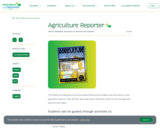
This resource puts students into the shoes of a new agriculture reporter. They will learn about agriculture while they search for the next big news story for their editor.
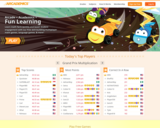
Arcademics make multiplayer educational games for students from K to eighth grade, from free math games to language games. Arcademics combines the excitement of video games with educational content to produce a high rate of learning through exciting, focused repetition that enables automaticity and fluency. All games can be played seamlessly on any device using the web browser for free.

Sign up for a 45 minute virtual field trip, and follow it up with a classroom unit about human rights and being an upstander. The classroom unit includes an inquiry project.
Virtual Field Trip:
Students will learn how to be human rights upstanders by discovering the stories of people who used their personal strengths to take a stand to protect their rights and the rights of others, creating change.
Students will:
1. Learn to identify traits all upstanders possess and understand that each of us also possess these traits in our own unique way.
2. Experience exhibits and the inspiring Museum architecture as if they were at the Museum in person.
Interact with a Museum guide and ask questions to better understand how they can take action for positive change.
3. Engage in discussion, critical thinking and reflection on their role in the protection of their own rights and the rights of others.
Classroom Unit:
The Be an Upstander resource is a project-based learning unit designed to complement the “Be an
Upstander” school program. This resource targets students in middle years and encourages inquiry and
action on human rights issues. Students will examine the traits of human rights upstanders and follow
their example. By the end of the project, students will have had the opportunity to explore an issue they
are personally passionate about, share their knowledge and lead others toward action.
The Be an Upstander website is a digital student experience designed to support student learning as part
of a larger human rights themed, project-based learning unit. Students developing upstander projects
will engage in personal inquiry and action on human rights issues that matter to them. Students will learn
about the traits of human rights upstanders, be introduced to the Universal Declaration of Human Rights
and examine their personal strengths. Following the example of the upstanders they learn about,
students will be challenged to take tangible steps to becoming human rights upstanders themselves.
If you need this resource in a different format for accessibility purposes, please contact
info@humanrights.ca.
Be an Upstander website: https://humanrights.ca/upstander/#/
Complementary teacher's guide https://humanrights.ca/upstander/#/teacher-guide

Through the activities within this toolkit, students will gain an understanding of the importance of nature and how all living things are connected. These resources are geared towards students in grades 6-8.

Bookopolis is a social network for kids that lets them log books and connect with other readers gr 1-8+. By creating an account, students create a virtual bookshelf and join a community of young readers who can discover new books, share book reviews and track their reading with a digital reading log. The site offers book recommendations ("Bookopolis Picks" and "What's Popular Right Now"), the opportunity to explore book reviews by other young readers, a featured book of the week, the opportunity to earn points and badges, plus the option to find books by grade (1-3, 3-6, 6-8, 8-12). You can sign in as an educator, a student or a parent. Choose the online version or download the app from your app store.

This resource encourages students to deepen their understanding of global poverty—to see our connections to the rest of the world, to explore the roots of inequities and to understand the importance of assistance that preserves human dignity, values diversity and unleashes the inherent power of community.
Experience has shown that successful development is possible—if initiatives invest in people and ensure that beneficiaries over time become the owners of the development process. This means addressing the intertwined causes of poverty and helping communities mobilize their resources so that they can help themselves. ultimately, it means providing a hand up instead of a handout. The stories contained in this resource draw on the long-term experience of Canada and Canadians in the developing world, and encourage students to see themselves as part of the bridge of hope that unites us as global citizens.
Tips for using this resource:
The lessons in this resource have been created as a unit that builds foundational understanding and encourages exploration of key concepts and critical global issues to allow for deeper learning and meaningful attitudinal change. While we recommend that the lessons be used together, each set of lesson activities can also stand alone to provide learning opportunities around a particular aspect of international development. The term “lesson” does not imply that it can be completed within one class. Class periods vary with timetables, and experience in co-operative learning, language levels and group dynamics can all affect the time needed to complete these activities. The teacher is the best judge of these factors.
Curriculum Connections:
The themes and concepts presented provide excellent links to Ministry of Education curricular objectives/
expectations in Social Science, history and Geography programs across the country. activities also maximize a
variety of specific skill-based objectives/expectations and competencies such as critical thinking, problem solving, communication, social skills and map analysis. Each lesson outlines general objectives/expectations to assist teachers in program planning. The activities can easily be adjusted for grade and level by providing varying degrees of support, allowing additional time and adjusting expected outcomes.

This resource examines the biodiversity and the complexity of the various life forms that make up Canadian forests. The emphasis is on helping students appreciate the relationships and interdependence of all species in this ecosystem. Students learn how they can affect forests and understand ways to preserve and maintain their diversity. Themes include biotechnology, natural and introduced pests, species at risk, habitat loss and fragmentation, protected areas, climate change and traditional indigenous knowledge. Lessons can be summarized as follows:
Lesson One- It's What Inside That Counts ( 1x90min)
Students learn the basics of biodiversity by studying the arrangements of fauna and flora in a field investigation of the schoolyard. Teams will visit three assigned "habitat" sites and record living and non-living components. After discussing results, students are asked to create a poem or story about living in one of the habitat sites.
Lesson Two- Too Hot, Too Cold,...Just Right ( 2x45min)
This lesson focuses on how climate change impacts population numbers. After a discussion on how climate changes are driven by human activity, students are guided through a role play simulating the effects of rising temperatures on Arctic, Mid-latitude and Tropical biomes. After a wrap-up with discussion questions, students are asked to write a short story on an assigned topic.
Lesson Three- What Our Elders Say (1x60min, 1x90min)
After looking at how a Canadian Aboriginal legend relates to biodiversity, the students read and perform a play based on the "Legend of The Sky Sisters". Students then write their own legend incorporating an environmental message.
Lesson Four- Barrier To Biodiversity (2x60min)
After reviewing as a class how human activity can lead to habitat loss and fragmentation, students have to write and present stories in the form of a power point presentation, poster, public service announcement or skit describing how individual plants or animals are subject to, and respond to, stress in their habitat.
Lesson Five- Off Limits (4x45min)
Students investigate officially protected areas and create a class newspaper that contains articles which focus on the role of protected areas in helping maintain diversity. In this exercise they explore the social, economic, and environmental impacts of protected areas.
Lesson Six- To Be Or Not To Be (2x60min)
Students work in groups to produce a "species at risk" game board which focuses on the habitat impacts of: change/modification, over-exploitation of resources, poorly regulated commercial harvest, disruption of migration routes/breeding behaviors, contamination, and the introduction of exotic species.
Lesson Seven- Unwelcome Guests (2 x 60min)
Students develop a "Futures Wheel"(a graphic description of the inter-relationships and impacts of a single decision or event) focusing on exotic and invasive species in Canada.
Lesson Eight- Timberland ( 1x90min)
A role playing activity is used to show how biotechnology can be used as a tool to help maintain forest biodiversity. Using a timber-theft crime story students will complete a report (including a CSI sheet and victim profile) to assist them in understanding techniques used in biotechnology.
This resource can easily be adapted to include no technology.
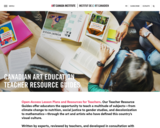
Canadian art is a door to learning about a wide range of subjects.
The Art Canada Institute teacher resource guides presented here offer students the opportunity to study a multitude of subjects—from environmental awareness to activism, social justice to gender studies, politics to computer science (to name a few)—through the art and artists who have defined this country’s visual culture.
Following our provinces’ education curricula, the teacher resource guides provide multidisciplinary learning activities that reveal how Canadian art powerfully reflects our world so we can better understand it.
Activities for K-12!
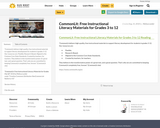
"CommonLit delivers high-quality, free instructional materials to support literacy development for students in grades 3-12. Our resources are:
Flexible;
Research-Based;
Aligned to the Common Core State Standards;
Created by teachers, for teachers.
They believe in the transformative power of a great text, and a great question. That’s why we are committed to keeping CommonLit completely free, forever." (CommonLit site)
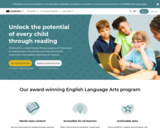
"CommonLit delivers high-quality, free instructional materials to support literacy development for students in grades 3-12. Our resources are:
Flexible;
Research-Based;
Created by teachers, for teachers.
They believe in the transformative power of a great text, and a great question. That’s why we are committed to keeping CommonLit completely free, forever." (CommonLit site)
Teachers can search for content by grade, theme, content type, genres, literary devices, and more. Alternative options are offered for students that may require adaptations for reading an easier level.
Parent guides are also provided.
Benchmark and ongoing assessments are available.
360 Curriculum provides full integrated units E.g., Unit 1 Characters Who Change and Grow which includes a baseline assessment, vocabulary activities, reading lessons, writing lessons, quiz, grammar activities, media exploration, discussion, and a culminating task.

Students in grades 4-6 engage in a series of activities (both inside and outside the classroom) designed to inspire a sense of environmental stewardship. Each of the activities is intended to have children explore their profound connection to nature and experience the power of individual and collective action.
Students explore the daily choices, they, their families, their school and their communities make; the impact of those choices on nature; and the role they and others may take in protecting nature.
The activities are fun, hands-on, and thought provoking. Students have opportunities to share what they are learning with their fellow students, family, and community and to create their own “class foundation” to collectively act on their concerns and passions.
The resource consists of 16 cross-curricular lessons on a range of issues from which teachers may select according to the dictates of their time and curriculum.
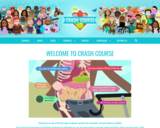
You can learn pretty much anything with these videos!
Science, History, Language Arts, & Study Skills, Games & More!
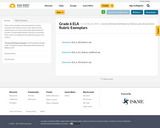
These 4 point rubric exemplars were developed to provide a consistent and common resource that aligns with the Saskatchewan curriculum and provide opportunities for transfer of responsibility between educator and student. These rubrics are designed to be edited by educator and student.

This site offers games, activities and resources in the following categories:
GAMES
MATH
LANG. ARTS
HISTORY
USA
GEOGRAPHY
SCIENCE
PEOPLE
HOLIDAYS
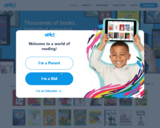
Epic Books is an online collection of over 40 000 titles of award-winning fiction, non-fiction, STEM (Science, Technology, Engineering, and Mathematics), biographies, graphic novels, DIY (Do It Yourself) and more. Sign up as an educator and the account is free. Epic Books can be used by teachers and students for read-alouds, shared reading, and independent reading time. Read-to-me and audiobook functions allow for the listening portion of a balanced literacy program. Teachers can use these books as part of interactive small group instruction for specific skills or strategies. They can also assign certain books and tasks for practice to individuals or groups.
Free for teachers - you must set up the free account and add students to your classroom in order to get a class code to provide to families. Then when students have that code, they can log in from home with free access.

This new website from Agriculture in the Classroom is a kid-friendly, engaging website that will bring the story of agriculture to life through highly interactive information, colourful illustrations, real-life photos, informative text, quizzes, teacher lessons and more! Students will discover the Past, Present, Evolution and Future of agriculture in Saskatchewan.

This comprehensive website contains a great deal of information and there are many curricular connections to grades 3 – 6 Science, Social Studies, and English Language Arts.
Be sure to check out the "Past", "Evolution", "Present" and "Future" tabs along the top to access LOTS of great ag resources and information!
Among other things, the site offers:
- Simple Lessons - Depending on the sections your students study and activities undertaken, different outcomes may be met. There are several ‘grab and go’ activities for students, available in both pdf and word documents.
- Brain Buster Activities - These crossword puzzles, word searches, word scrambles, matching pages, and colouring pages are great when time is limited because they can be easily stopped and started! They will challenge students to problem-solve and test their knowledge.
- Quizzes - The quizzes here are generally the same quizzes as the students will find on the web pages. They are available for each section on this website so that students progress can be tracked if you wish!

Free Online Learning & Education For Kids
Created for kids in grades Pre-K through 8, Funbrain.com has been the leader in free educational games for kids since 1997. Funbrain offers hundreds of games, books, comics, and videos that develop skills in math, reading, problem-solving and literacy.
Educators and parents can trust our site to provide a fun and safe experience both at home and at school. Funbrain does not collect personally identifiable information from kids.
You can access FULL BOOKS, games, and videos for free!

"Kids can use this as a resource for a variety of subjects. With biographies, an atlas, and other reference materials, Factmonster is an informative place for kids to find fun facts and play educational games." (Common Sense Media)
Resources are organized across the top toolbar by subject, homework, games and tools.